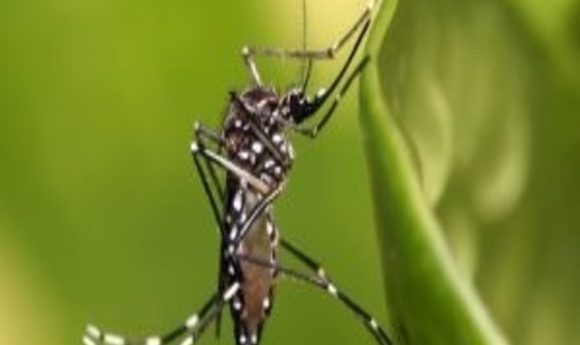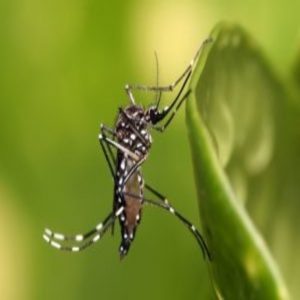Zika Mosquito Genome Put on the Map

Finally, a revolutionary technique allows researchers to finish piecing together the genome of the Zika virus vector. Read more…

Aedes aegypti in Dar es Salaam, Tanzania.
Credit: Wikipedia.
As the Zika virus raced around the equator, researchers scrambled to sequence the entire genome of Aedes aegypti, the main mosquito responsible for spreading the virus. Despite years of research, the genome remained incomplete due to technical limitations, slowing down research progress.
Why was it so difficult to generate a high-quality genome sequence for Aedes aegypti? “It’s not just a challenge specifically for the mosquito; it is a more general challenge,” said Olga Dudchenko, lead author of a new paper published in Science that presents a novel genome assembly procedure that is fast, cheap, and more accurate than previously used methods (1).
Dudchenko compares genome assembly to a jigsaw puzzle where the puzzle pieces are fragments of base pairs along a chromosome. As with a jigsaw puzzle, some pieces such as those with edges or a detailed flower, are easier to piece together than others where the pictures is more uniform. “It’s the same story with genome assembly. You have highly repetitive sequences where everything looks incredibly similar to each other so it’s very difficult to assemble, and often just impossible,” said Dudchenko.
Currently, researchers assemble genomes using next generation sequencing, which slices DNA into small pieces that can be read and then re-assembled based on overlapping regions. This technique is great until you come across long fragments of repetitive DNA, like an expansive blue sky in a jigsaw puzzle. “Mosquitoes are notorious for expanses of these blue, blue skies that prevented things from being put together in any reasonable way,” said Dudchenko.
To complete the Zika genome, Dudchenko and colleagues refined a method called Hi-C that they first published on in 2009 (2). Hi-C probes the 3D structure of whole genomes to create maps that show how often during chromosome folding certain parts of the genome come into contact with one another. These Hi-C maps can then be used to determine how close genome fragments are to one another, or which pieces that comprise the blue sky are close in proximity.
In the present study, the researchers combined Hi-C with a draft of the A. aegypti genome published in 2007 (3) and assembled the genome using even smaller fragments than previously required for the technique. In addition to the A. aegypti genome, the researchers validated the method by assembling the genome of the mosquito that transmits West Nile virus, Culex quinquefasciatus.
Not only is this modified Hi-C method more accurate, it’s also faster and cheaper than currently available genome sequencing techniques. “The Zika outbreak highlighted that we don’t necessarily always know which particular organism will come to the spotlight with respect to a particular urgent health issue,” said Dudchenko. “The hope is that the methods we describe will give means to respond within weeks and hopefully days rather than years.”





